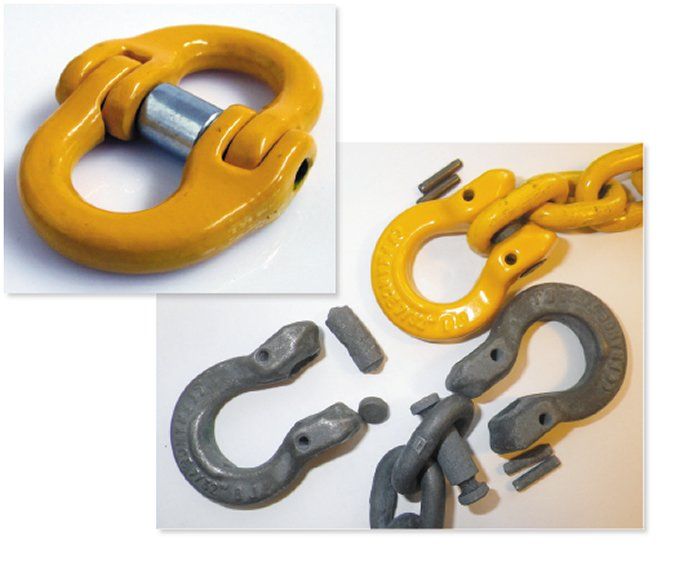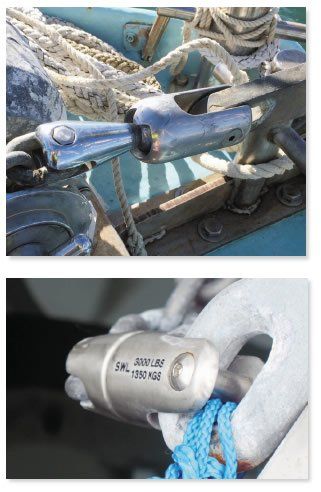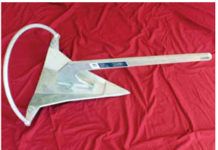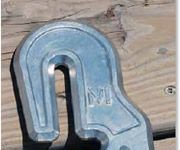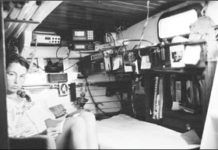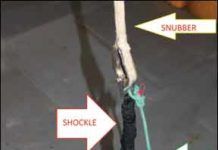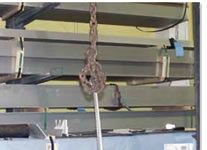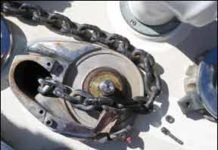Mantus Upgrades to a Stronger Shank
Late last year, we had our first look at the bolt-together Mantus anchor. Although we liked the design, and prices were favorable (around $330 for a 35-pounder), we raised concerns about the shank strength, which by our estimation was the weakest of all anchors of a similar design.
Mantus Anchor-chain Hook
Practical Sailor recently looked at various ways to take the load off the windlass and roller by means of a short rope snubber or bridle, but we did not talk about how to attach a snubber to the chain. The Mantus Chain Hook takes an innovative approach, and seemed particularly useful for catamaran owners with long bridles. Testers put the 1/4-inch stainless Mantus hook through more than 50 anchoring cycles and dozens of tide cycles aboard a PDQ 32. Find out how the Mantus fared.
Where Credit Is Due: September 2013
Alpenglow I would like to take this opportunity to express my gratitude to (and recommendation of) the folks at Alpenglow Lights (www.alpenglowlights.com). We have many of their fixtures and have contacted the company on numerous occasions for new sales, upgrades, and technical questions. Without fail, they have exceeded our expectations, from offering to perform upgrades at minimal cost, to telling us secret workarounds that enabled us to use locally sourced parts and supplies to re-invigorate their excellent lighting units.
All is Lost and Found
A photographer friend stumbled upon this photo of my wife, Theresa, from our cruising days. It was taken in Fiji around 1995. She doesn't usually look this serious; it probably had something to do with having two guests on board a cramped 32-foot Atkin ketch for a couple of weeks. I thought the image illustrated well something that Ive been thinking about lately: the value of resourcefulness while cruising. This notion of the self-sufficient sailor came to mind most recently while watching the movie trailer for All is Lost, in which a single-handed sailor (played by Robert Redford) tries to keep his beloved Cal 29 afloat.
Shockles Snubber Test
The string of anchor tests weve carried out in the last year presented a good opportunity for us to also test an anchor accessory: the Shockles anchor snubber. Makers claim it helps your anchor stay set by reducing the constant shock loads during strong winds or in rough seas. We did some real-world testing aboard a 6-ton Lightwave 38 catamaran in a range of conditions and anchorages, and we also bench-tested the snubber, using a load cell and chain winch.
Mailport: June 2013
How thick is too thick for the buildup of old layers of bottom paint? This question arises because I have just finished painting the bottom of my boat. Even though I diligently sought out potential flaking spots with my knife, while rolling on the paint (Pettit Ultima Eco), I would frequently get a mess caused by the paint flaking off. I have only owned this boat for three years, so I really do not know how many layers there are.
Anchor Tests: Bending More Shanks
In the first part of this series on anchor-shank strength, we examined how the shanks of anchors that supposedly met the most stringent industry standards could bend under loads that a typical cruising sailboat could encounter. With this installment, we wanted to demonstrate how that might happen in a fact-finding field test. Based on our previous findings, we concentrated our study on a specific group of anchors and specific type of load. The anchors are regarded as super high holding power (SHHP) anchors, and the load was a sudden, snatch (or dynamic) load applied at a 90-degree angle to the direction each anchor was set.
Bends and Breaks: Anchor Shank Strength
As more and more anchor-makers source their materials and move their fabricating offshore, Practical Sailor has been fielding an increasing number of questions about anchor quality. Is the tensile-strength steel used to fabricate anchors consistent with the application? Is anyone actually measuring shank strength? And how much does it matter? At the heart of this discussion is shank strength. There seems little point in having a high holding-capacity anchor, if the shank isn't strong enough to cope with projected loads.
A Second Look at Anchor Tests
Anchor testing at Practical Sailor has always been a controversial enterprise, sure to fire up someone. As one reader commented in response our most recent anchor report (PS, March 2013): Anchors are a whole lot like religion. No matter what the tests show, each of us has a favorite that well defend to the death! This month, our report on anchor-shank strength approaches the topic from a different angle. Rather than singling out specific anchors for holding power or design, we take a closer look at the way anchors are evaluated and promoted.
The Hassles of Hockles
Taking the advice of a PS review, I installed a Lewmar V2 windlass on my boat in 2008. I went with the installers recommendation of 100 feet of galvanized chain and 100 feet of eight-part braid, connected with a rope-to-chain splice, and I have a Delta 35 anchor. I found that a chain hockle (a twist in the chain that jams the windlass) will terribly mangle the vertical windlass. I have just completed my second mangling and ordered replacement parts-but these parts will not save me from the next mangling. The Lewmar distributor told me to install a chain swivel, but PS has warned about this (PS Advisor, May 2010). Is an all-chain rode a dumb idea? Is there some solution?
































